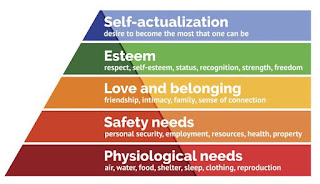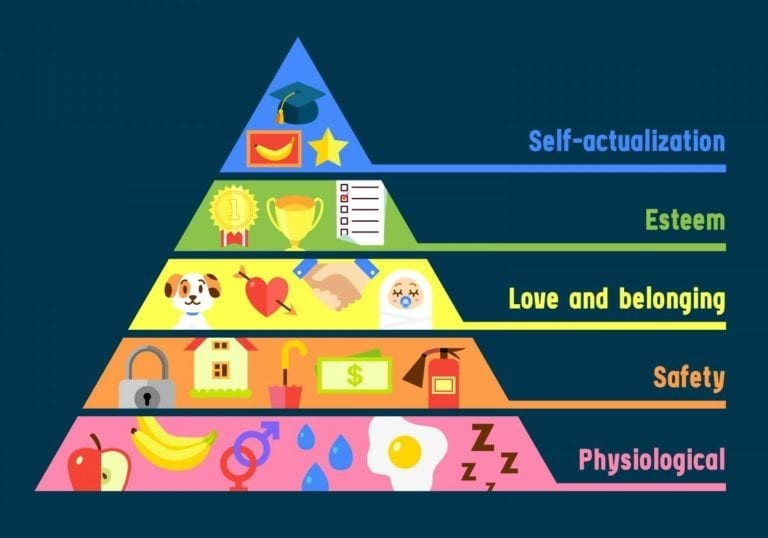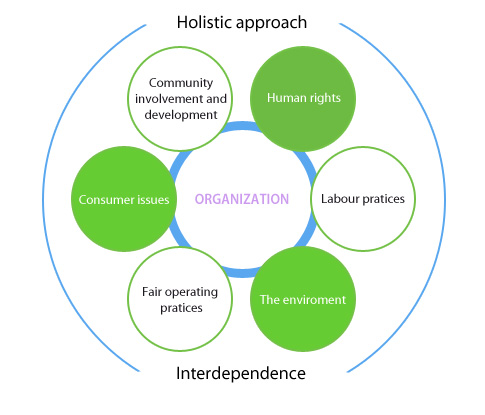3rd Bac - Identifying the problem to solve. Needs Analysis Matrix. (Maslow's Hierarchy of Needs)
https://www.youtube.com/watch?v=L0PKWTta7lU&ab_channel=TheSchoolofLife
Identifying the problem to solve. Needs Analysis Matrix
Knowledge on the specific needs of potential buyers of the good or services is a key strategic requirement that the entrepreneur must pay a lot of attention. For this reason, it is important that in the phase of market research all preventive measures are taken so that, as part of the gathering and analysis of the market supply and demand data, the entrepreneur can know what the market is really asking for.
Maslow's Hierarchy of Needs
Maslow's hierarchy of needs is a theory by Abraham Maslow, which puts forward that people are motivated by five basic categories of needs: physiological, safety, love, esteem and self-actualization. In order to better understand what motivates human beings, Maslow proposed that human needs can be organized into a hierarchy. This hierarchy ranges from more concrete needs such as food and water to abstract concepts such as self-fulfillment. According to Maslow, when a lower need is met, the next need on the hierarchy becomes our focus of attention.

These are the five categories of needs according to Maslow:
Physiological
These refer to basic physical needs like drinking when thirsty or eating when hungry. According to Maslow, some of these needs involve our efforts to meet the body’s need for homeostasis; that is, maintaining consistent levels in different bodily systems (for example, maintaining a body temperature of 98.6°).
Maslow considered physiological needs to be the most essential of our needs. If someone is lacking in more than one need, they’re likely to try to meet these physiological needs first. For example, if someone is extremely hungry, it’s hard to focus on anything else besides food. Another example of a physiological need would be the need for adequate sleep.
Safety
Once people’s physiological requirements are met, the next need that arises is a safe environment. Our safety needs are apparent even early in childhood, as children have a need for safe and predictable environments and typically react with fear or anxiety when these are not met. Maslow pointed out that in adults living in developed nations, safety needs are more apparent in emergency situations (e.g. war and disasters), but this need can also explain why we tend to prefer the familiar or why we do things like purchase insurance and contribute to a savings account.
Love and Belonging
According to Maslow, the next need in the hierarchy involves feeling loved and accepted. This need includes both romantic relationships as well as ties to friends and family members. It also includes our need to feel that we belong to a social group. Importantly, this need encompasses both feeling loved and feeling love towards others.
Since Maslow’s time, researchers have continued to explore how love and belonging needs impact well-being. For example, having social connections is related to better physical health and, conversely, feeling isolated (i.e. having unmet belonging needs) has negative consequences for health and well-being.
Esteem
Our esteem needs involve the desire to feel good about ourselves. According to Maslow, esteem needs include two components. The first involves feeling self-confidence and feeling good about oneself. The second component involves feeling valued by others; that is, feeling that our achievements and contributions have been recognized by other people. When people’s esteem needs are met, they feel confident and see their contributions and achievements as valuable and important. However, when their esteem needs are not met, they may experience what psychologist Alfred Adler called “feelings of inferiority.”
Self-Actualization
Self-actualization refers to feeling fulfilled, or feeling that we are living up to our potential. One unique feature of self-actualization is that it looks different for everyone. For one person, self-actualization might involve helping others; for another person, it might involve achievements in an artistic or creative field. Essentially, self-actualization means feeling that we are doing what we believe we are meant to do. According to Maslow, achieving self-actualization is relatively rare, and his examples of famous self-actualized individuals include Abraham Lincoln, Albert Einstein, and Mother Teresa.
Lastly, an example for Self-actualization Needs: A person satisfied in all his previous levels, now looks to improve his own self and his ways of thinking.
- Social (love/belonging) needs
- Self-actualization needs
- Physiological needs
- Safety needs
- Esteem needs
- Social (love/belonging) needs
- Self-actualization needs
- Physiological needs
- Safety needs
- Esteem needs





Comments
Post a Comment